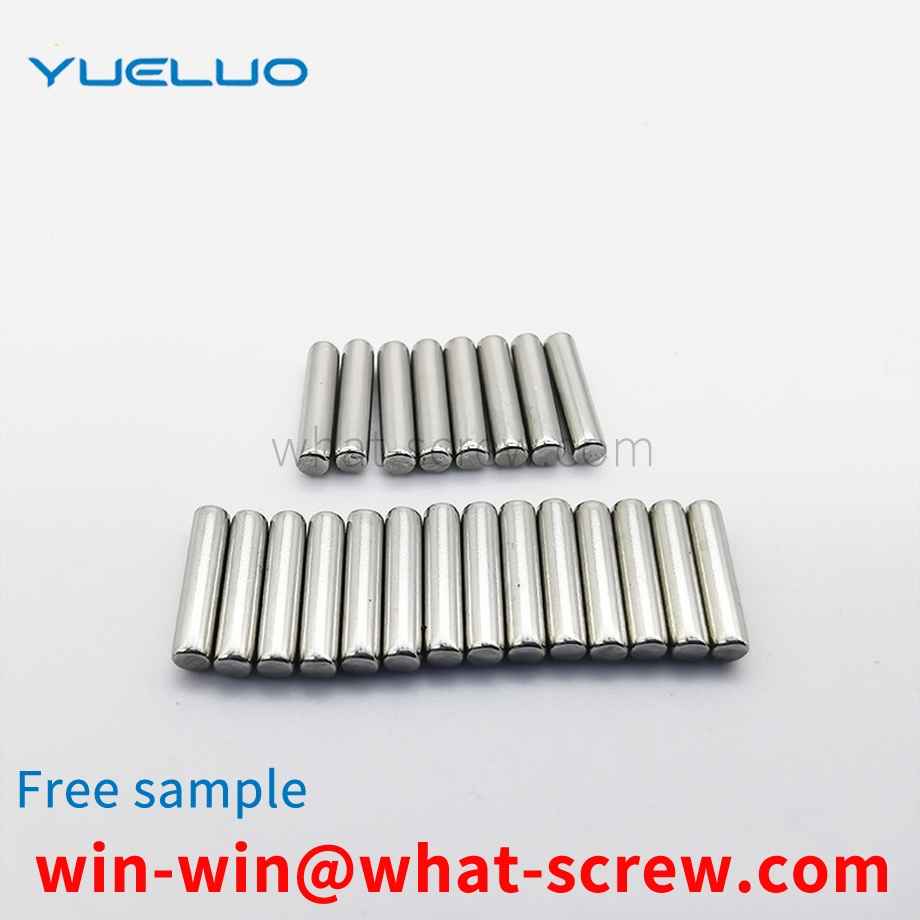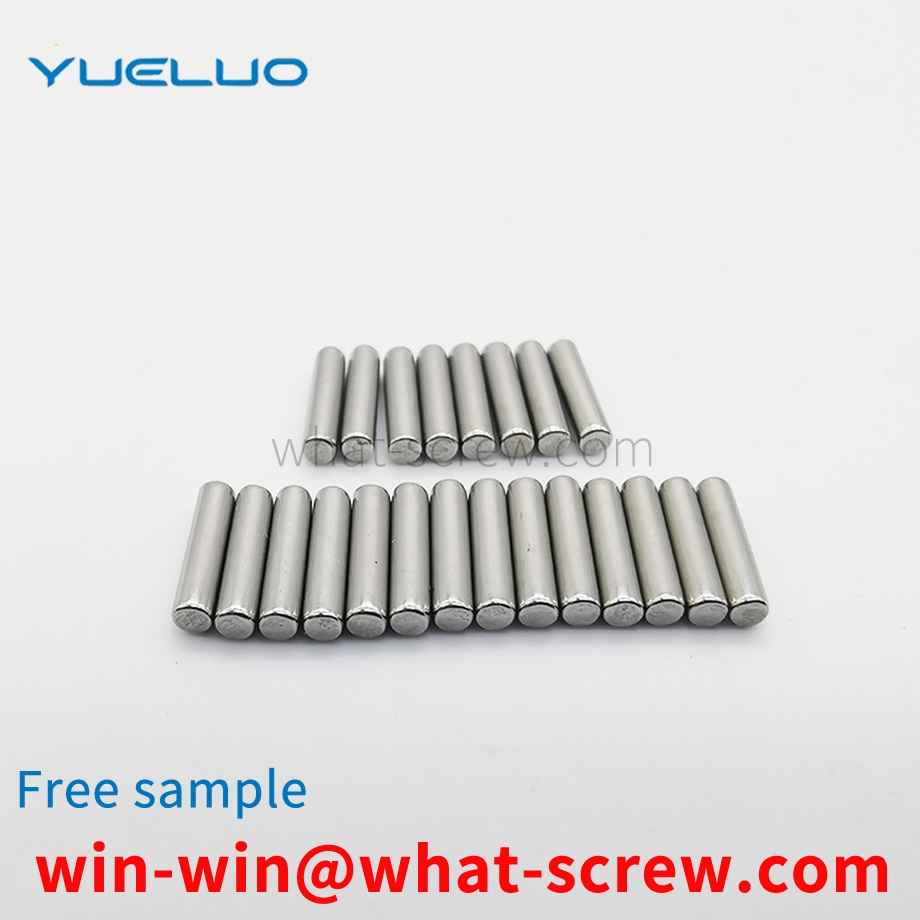1. Ordinary outer hexagon - widely used, characterized by relatively large tightening force, the disadvantage is that there must be enough operating space during installation, and adjustable wrench, open-end wrench or glasses wrench can be used during installation, all of the above wrenches require a large amount of space. operating space. 2. Cylindrical head hexagon socket - is the most widely used of all screws, because it has a relatively large tightening force, and can be operated with a hexagon wrench. It is very convenient to install and is used in almost all kinds of structures. The appearance is more beautiful and neat. The disadvantage is that the tightening force is slightly lower than the outer hexagon, and the inner hexagon is easily damaged due to repeated use and cannot be disassembled. 3. Pan head inner hexagon - rarely used mechanically, the mechanical properties are the same as above, mostly used in furniture, the main function is to increase the contact surface with wooden materials and increase the ornamental appearance. 4. Headless inner hexagon - must be used in certain structures, such as the top wire structure that requires a large top-tight force, or where the cylindrical head needs to be hidden. 5. Countersunk head hexagon - mostly used in power machinery, the main function is the same as the inner hexagon. 6. Nylon lock nut - a nylon rubber ring is embedded in the hexagonal surface to prevent the thread from loosening, and it is used on strong power machinery. 7. Flange nuts - mainly play the role of increasing the contact surface with the workpiece, mostly used in pipes, fasteners, some stamping parts and casting parts. 8. Ordinary hex nut - the most widely used and one of the most common fasteners.
Code name and standard number of inch thread commonly used abroad Mark code name country and standard number Remarks BSW standard Wyeth coarse thread series, general purpose cylindrical thread British standard BS 84 inch thread with a profile angle of 55° BSF standard Wyeth fine thread series, General Purpose Cylindrical Thread Whit.S Additional Whit.S Optional Series, General Purpose Cylindrical Thread Whit Non-standard thread with Whitworth profile UN Uniform thread of constant pitch series American standard ANSI B1.1 inch thread with 60° profile angle, with Internal and external threads with standard profile (flat or rounded at random) UNC Coarse thread unified thread UNF fine thread unified thread UNEF superfine thread unified thread UNS① Special series unified thread UNR round The uniform thread profile angle of the arc root constant pitch series is 60° inch thread, UNR, UNRC, UNRF, UNREF, UNRS with arc root are only used for external thread without internal thread UNRC arc root coarse thread Series Unified Thread UNRF Circular Root Fine Thread Series Unified Thread UNREF Circular Root Ultra Fine Thread Series Unified Thread UNRS Circular Root Special Series Unified Thread NPT② Generally used for pipe thread American standard ANSI B1.20.1 Profile angle is 60° Inch Pipe Thread NPSC Pipe Fitting Straight Pipe NPTR Pilot Connection Tapered Pipe NPSM Mechanical Connection Straight Pipe NPSL Lock Nut Straight Pipe NPSH Hose Connection Straight Pipe NPTF Dry Seal Standard Tapered Pipe Thread American Standard ANSI B1.20.3 Type I PTF-SAE SHORT Dry Seal Short Taper Pipe Thread Type II NPSF Dry Seal Standard Fuel Oil Straight Pipe Internal Thread III Type NPS1 Dry Seal Standard General Straight Pipe Internal Thread IV Type ACME③ General Purpose Trapezoid Thread American standard ANSI B1.5 Inch drive thread with 29° profile angle ① Dimensions and tolerances All diameter and pitch combinations other than the standard series are calculated using the same formula as the standard series. ② my country's 60° conical pipe thread GB/T12716-1991 is equivalent to it. ③ACME thread includes two kinds of matching trapezoidal threads, general purpose and centering, of which the general purpose thread has the same performance as the trapezoidal thread specified in my country's standard GB/T5796-1986.
Surface treatment process of screws 1. Types of surface treatment: Surface treatment is the process of forming a covering layer on the surface of the workpiece by a certain method. The purpose is to give the surface of the product a beautiful and anti-corrosion effect. The following methods are as follows: 1. Electroplating: Immerse the part to be electroplated in an aqueous solution containing the metal compound to be deposited, and pass the current through the plating solution to precipitate and deposit the electroplated metal on the part. Generally, electroplating includes galvanized, copper, nickel, chromium, copper-nickel alloy, etc., and sometimes blackening (blue), phosphating, etc. are also included. 2. Hot-dip galvanizing: It is done by immersing the carbon steel parts in a zinc-melting bath with a temperature of about 510°C. The result is that the iron-zinc alloy on the surface of the steel gradually becomes passive zinc on the outer surface of the product. Hot dip aluminizing is a similar process. 3. Mechanical plating: The surface of the product is impacted by the particles of the plated metal, and the coating is cold welded to the surface of the product.
In view of this, a screw with waterproof, anti-loosening and anti-removal functions is provided. A screw comprises a screw rod and a screw head connected with the screw rod, the diameter of the screw head is larger than the diameter of the screw rod, and an annular groove is formed around the screw rod on the surface of the screw head connected with the screw rod, The screw head is also provided with a through hole penetrating the screw head, and the through hole is communicated with the annular groove for filling the annular groove with adhesive substances. Compared with the prior art, the screw provided by Guangdong Yueluo Hardware Industry Co., Ltd. has a structure in which a through hole and an annular groove are arranged on the screw head, so that after the screw is locked into the screw hole, the screw head is not locked. A glue storage flow channel is formed between the contact surface with the part, and then the glue material is injected into the glue storage flow channel through the through hole to form a sealing annular rubber ring, so as to better ensure the waterproof performance of the screw joint. Furthermore, by connecting the through hole with the screwdriver groove, while forming a sealing annular rubber ring, the driver groove can be directly filled for the purpose of preventing dismantling.
An elastic cylindrical pin loading and unloading tool, comprising a rectangular base on which a hollow cylindrical tooling station is arranged for fixing a tooling and installing a cylindrical pin on the tooling for shear force testing, the The tooling includes an outer cylinder and an inner cylinder that are assembled together, the outer cylinder and the inner cylinder are in clearance fit, and the base is further provided with a counterbore for taking out the inner cylinder after the tooling test is completed.
We have many years of experience in the production and sales of screws, nuts, flat washers, etc. The main products are: cross recessed bolts, brass step bolts, galvanized nuts, cap nuts and nuts and other products, we can provide you with fasteners suitable for you solution.



















 Service Hotline
Service Hotline




